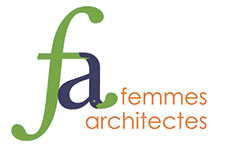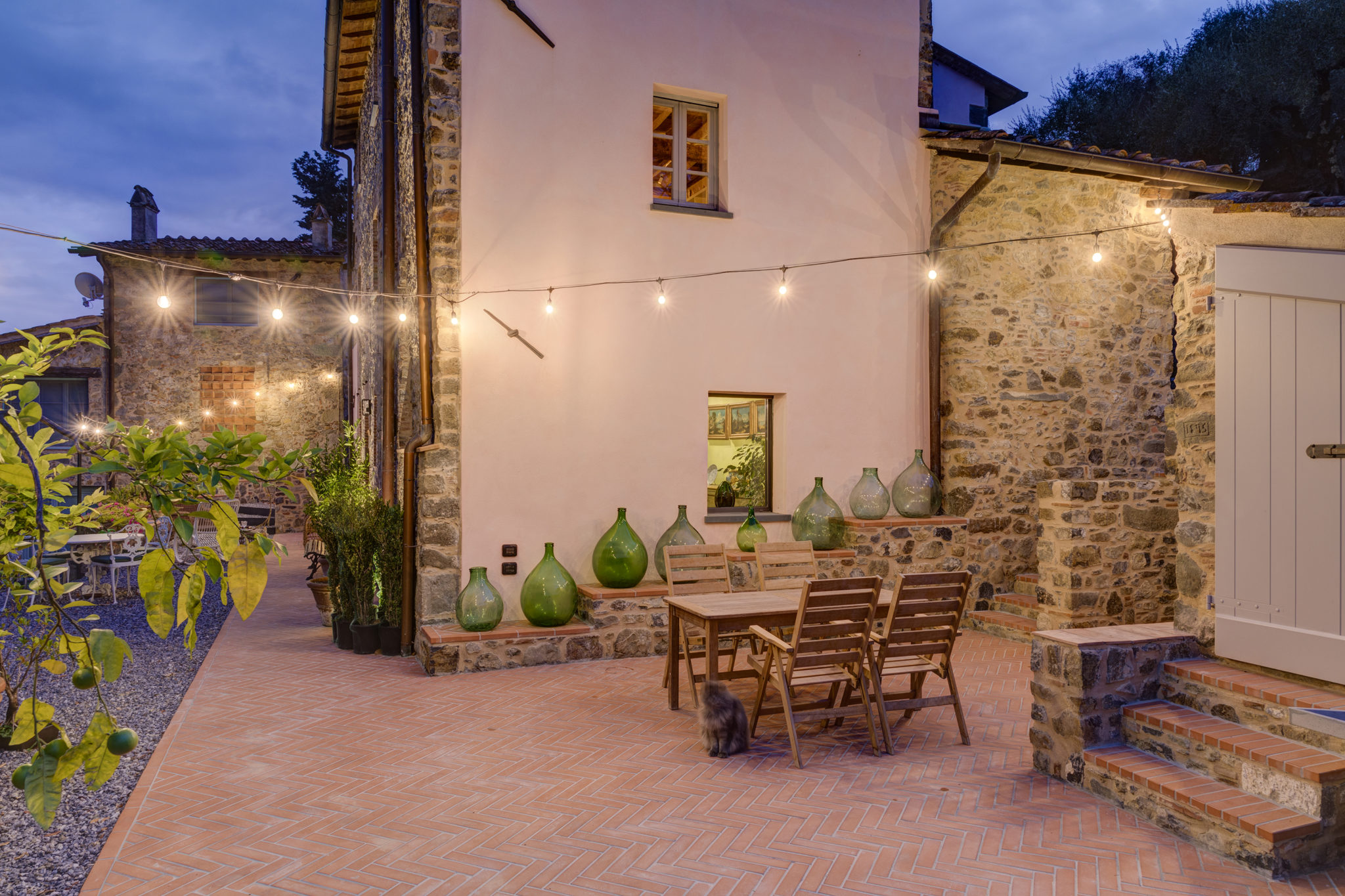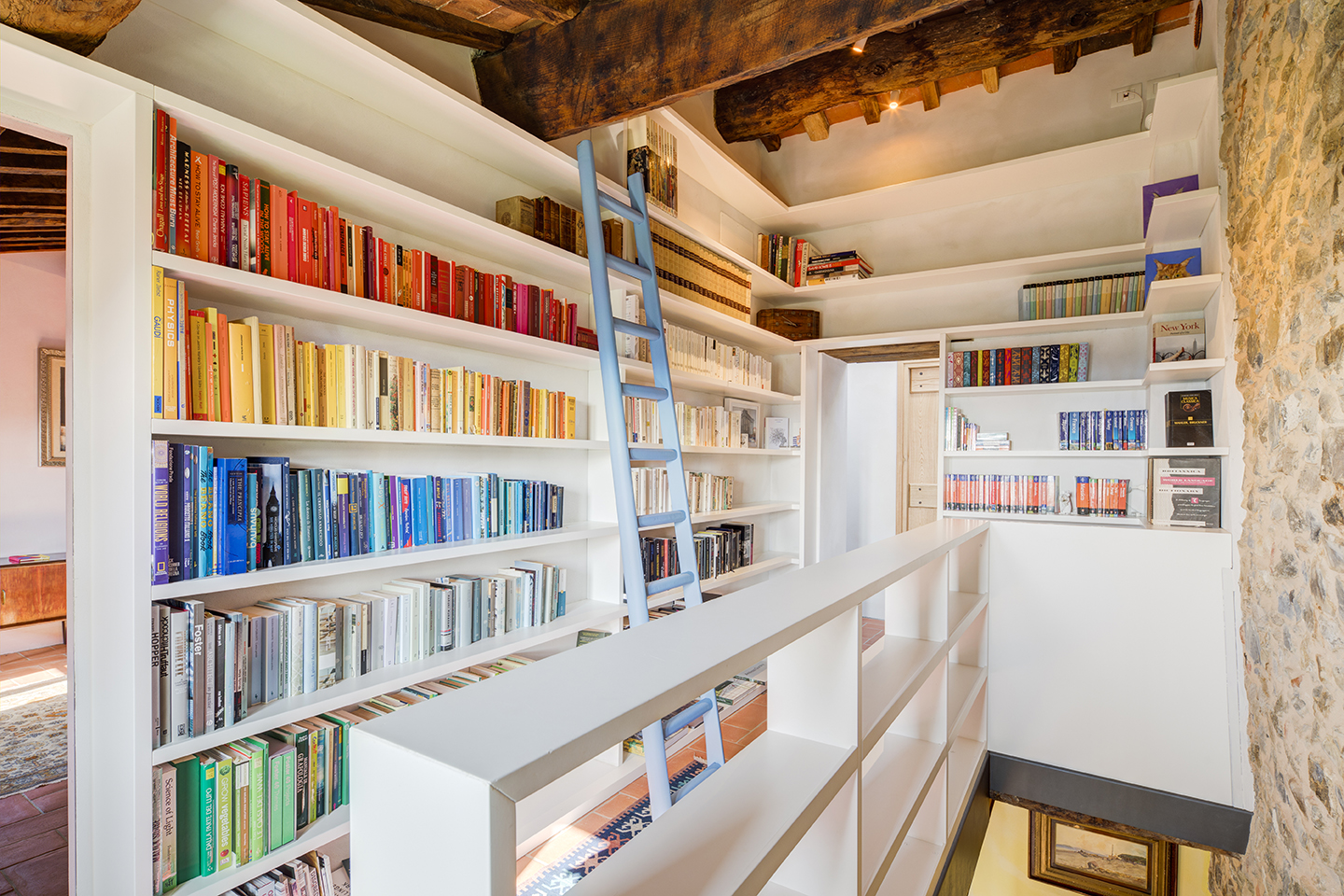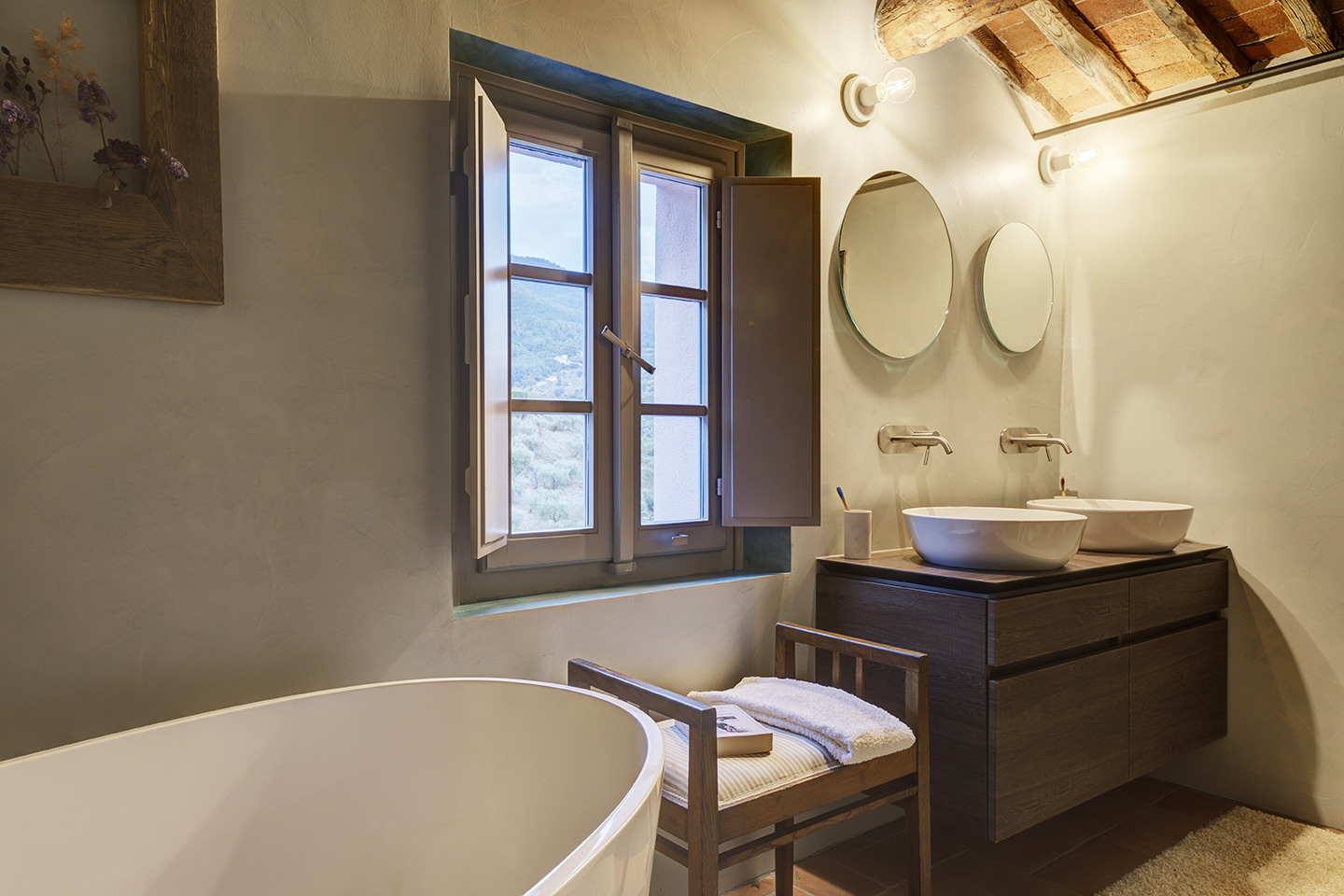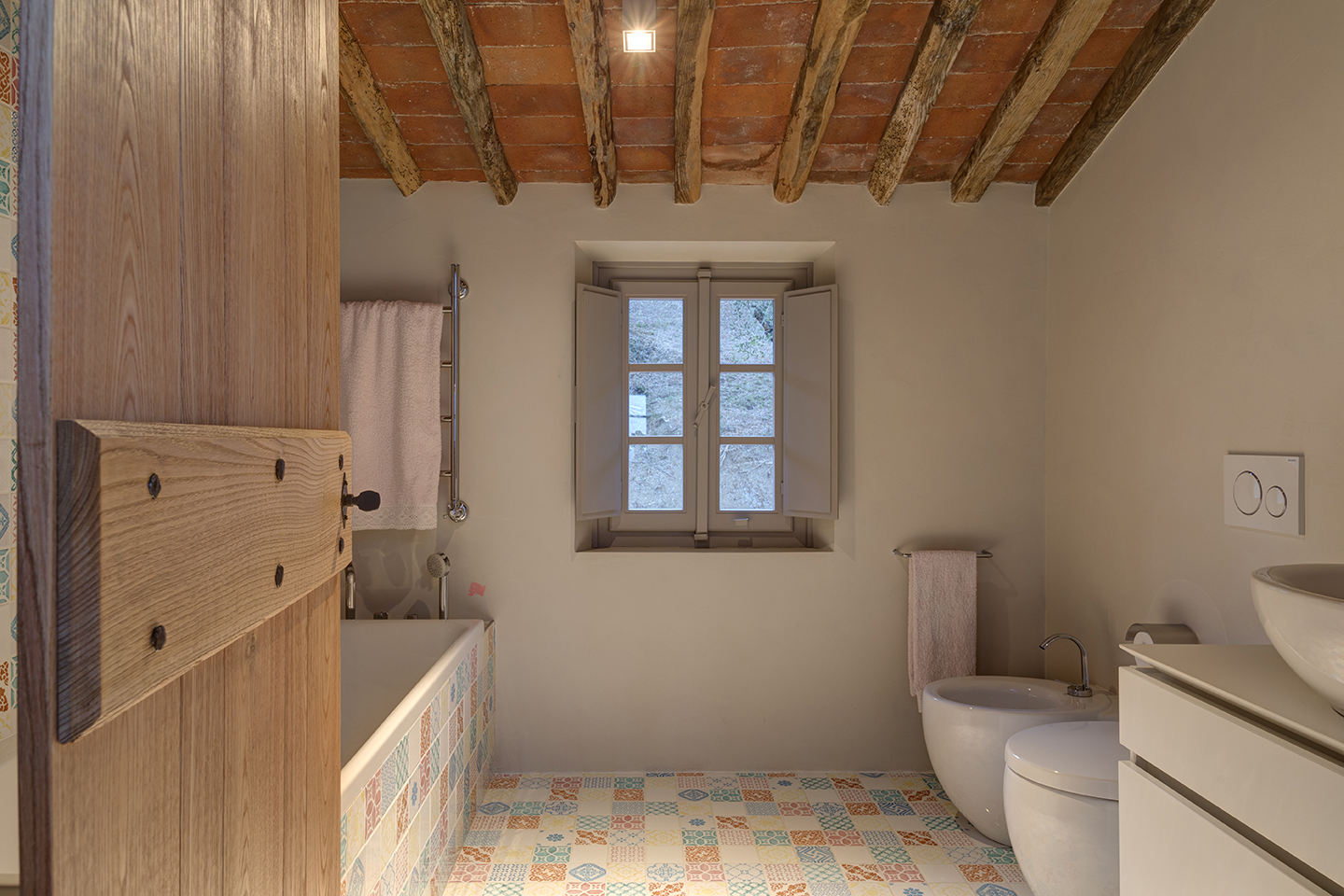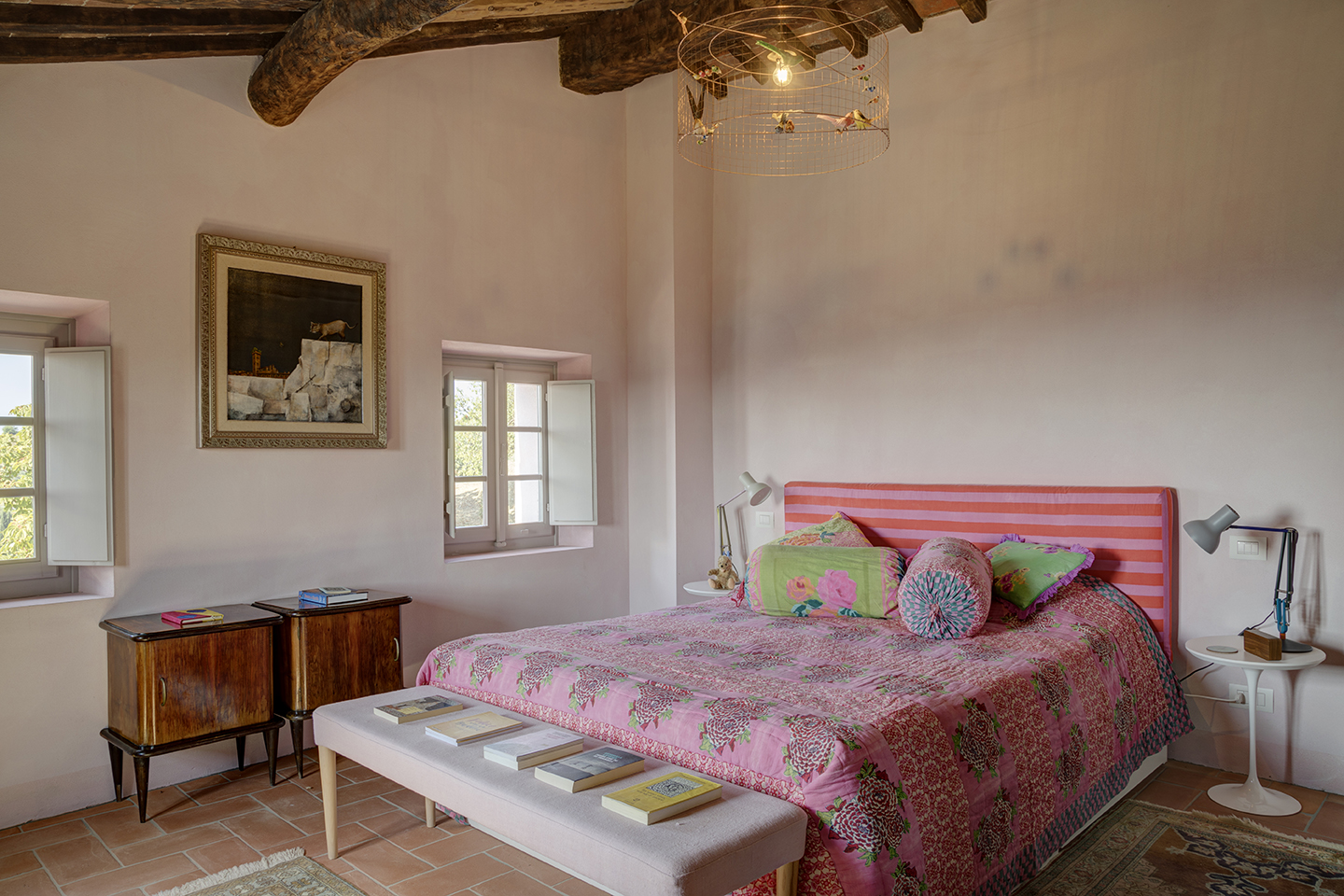The Foxes
The brief was to transform this derelict 17th century farm house, into a carbon zero, contemporary countryside home.
Transforming it from a relic into family home involved stripping the building back to its core structure. We excavat-
ed the existing basement by one meter to create a new liveable space including the kitchen, dining areas and utility rooms. All the existing windows and doors were refurbished, double glazed and reused. New windows were intro-duced to utilise light, where previously had not existed before. In the past, windows were intentionally small since rooms had to be insulated, we preserved that character, even with the additions.
The result is a spacious living area where the family can move easily from one space to another. On the new ground floor, we replaced a wooden ladder with a contemporary bespoke metalwork staircase, creating both a feature and more light. We maintained the original stone staircase and incorporated a library bookcase within the landing space on the second floor – functional and beautiful.
Each room has a different colour to define the use and the lighting, by Delta Light, highlights key pieces of furniture or artwork. We hand-picked each piece of furniture to create a unique, but cosy living space, mixing contemporary and antique styles.
The ground floor, which is partially subterranean, was originally divided into smaller storage rooms. This once dark and cramped canteen is now occupied by an open plan that functions as a kitchen, dining area, with a larder, laundry and a bathroom to the rear. The original living quarters on the first floor contain three reception rooms, while the sec-ond floor includes two bedrooms, two bathrooms, dressing room and the library.
Part of the existing facade was refurbished in the 1950s with brick and concrete introduced to the external walls. How-ever we chose to revert them back to the original facades and retrofit stone blocks where necessary. We repointed the walls and added water features and structures for climbing plants.
To fulfil the ecological element of the brief, we used sustainable technologies including a heat pump, underfloor heat-ing and cooling, and natural insulation. The owners are able to harvest rain water and use it for their vegetable garden. The introduction of solar panelling means the house is now energy neutral. The house functions using clean electric energy only.
We have only used local materials, and reused and utilised furniture and equipment found on site. All materials on site were sourced locally, with local artisan builders and craftspeople carrying out all the work. The external works and landscaping follow the natural inclination of the site, without having a mass movement of earth. The focus during construction was on creating as little waste as possible – all excavated materials were reused over the duration of the project, either within the build or as part of the landscaping – no material was removed from site.
Despite the obvious contrast of contemporary interiors, we grounded each room to the Tuscan terroir with rustic detail-ing and rescued materials.
Salvaged wood, doors, stone details, appear throughout the property, from the beamed ceilings to the timber-accented archways, and old farm doors were repurposed as bathroom doors and for the external spaces.
For the bathrooms, the finishes included resin together with local marble and local hand painted tiles to give each bathroom a specific mood. The showers and bathtubs face windows to mimic the liberating experience of being at one in nature.
The house is fully immersed within an olive grove containing over five hundred trees. The immediate landscape surrounding the house has been divided into different spaces, beginning with the dining area and wood oven – in a “vil-lage style square”. Various pathways lead to a quite shaded reading area, the herb garden and eventually you arrive at the vegetable garden all of which is surrounded by an abundance of fruit and nut trees.
The idea was to give the project a sense of timelessness, by proposing only a few simple tones and materials. We wanted to draw attention to the beautiful vegetation and trees surrounding the building, and to push the owners into cultivating their own food and enjoying the nature around them.
